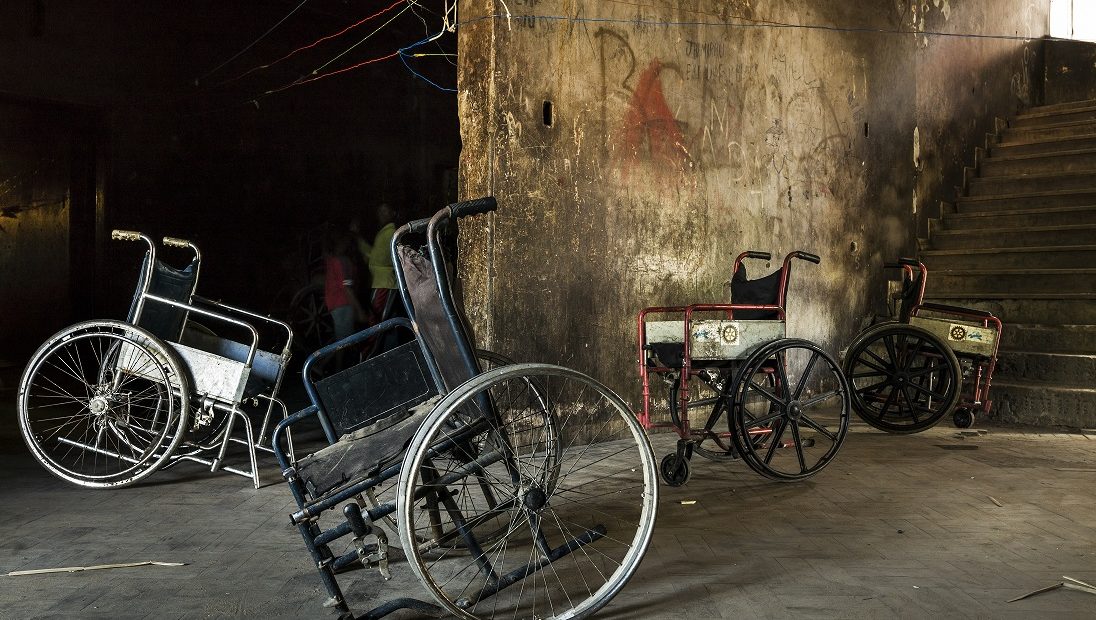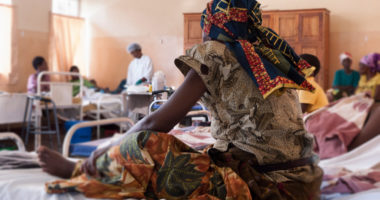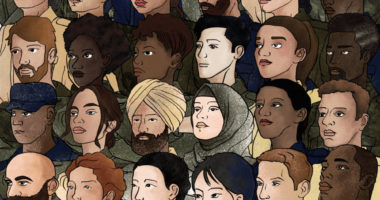Today, there are around one billion people living with disabilities. They are the world’s largest minority, and one of the most excluded groups in society. Experience shows that they are also among the most affected during pandemics, particularly people with disabilities living in conflict zones.
Disability is an evolving concept. Over the years and in present time, there have been many different approaches towards disability, including:
- the moral approach, with which some communities view disability either as a curse or a blessing from the gods, in repayment for an evil or a good deed, respectively. This view can result either in the adoration of persons with disabilities, or in their sacrifice and victimization;
- the medical approach, which considers persons with disabilities as ‘sick’, prioritizing activities to ‘fix’ them, so that they are ‘healed’ and can join ‘normal’ society;
- the charity approach, wherein persons with disabilities are regarded as ‘unfortunate’, ‘dependent’ or ‘helpless’, who need pity and charity, and as such, they are passively given money or gifts, such as food or clothing;
- the social model, which does not look at persons with disabilities separately, but rather examines the links between them and the society, considering disability as the social consequence of impairment and societal barriers; and finally,
- the rights-based approach, which focuses on equity and rights, in order to include all types of people – regardless of their background or any other characteristic – equally in society. The two main elements of the rights-based approach are empowerment, i.e. the participation of persons with disabilities, and accountability, i.e. the duty of public institutions and structures to effectively implement these rights.
Based on both the social model and rights-based approaches, the Convention on the Rights of Persons with Disabilities describes persons with disabilities as those who have long-term physical, mental, intellectual or sensory impairments which in interaction with various barriers may hinder their full and effective participation in society on an equal basis with others.
Disability, sexual violence risk and COVID-19: a toxic cocktail
The numbers are clear: people with disabilities, particularly women and girls, are at a disproportionate risk of sexual violence. Nearly 80 percent of women with disabilities have experienced violence and are four times more likely than other women to suffer sexual violence. The reasons they are at heightened sexual violence risk in the COVID-19 pandemic may also be exacerbated by intersectional factors such as age, gender, and location, among others.
Various barriers also create heightened risks. Environmental barriers, such as inaccessible sexual violence prevention and response services, play an important role. For instance, some of the information on sexual violence provided by humanitarian organizations has not been accessible in terms of font size and type, colour contrast, printing materials or formats used. Consequently, people with disabilities do not have access to this information, placing them at a higher risk of sexual violence. During the current pandemic, those who were assisted and protected by personal assistants also became more exposed to sexual violence when their assistants contracted COVID-19 and were quarantined.
People with disabilities have also faced attitudinal barriers during the pandemic, which increased their level of vulnerability to sexual violence. Some societies regard persons with disabilities as asexual and therefore incapable of engaging in any sexual activity – including forced sexuality. As a result, when they – especially those with intellectual and psychosocial impairments – report sexual violence related incidents, they are regarded as ‘mad’ or ‘sick’ and, as a result, the cases are dismissed. At times, attitudinal barriers can take a moral angle. For example, some communities from sub-Saharan Africa believe that raping a person with albinism is a cure for HIV/AIDS. Such a mindset may potentially lead to similar beliefs related to COVID-19, putting them at even higher risk.
Institutional barriers – those comprised of laws and policies – are equally challenging for persons with disabilities in relation to COVID-19 and sexual violence. Some countries have policies towards the institutionalization of persons with disabilities in special schools or mental health hospitals for those with physical impairments. In such institutions, health and protection risks are higher. In some countries still, persons with disabilities – and especially those with intellectual and psychosocial impairments – are legally categorized as people of ‘unsound mind’ and cannot report sexual violence related cases.
Mitigating the barriers
To overcome these barriers, measures should be taken to ensure that sexual and gender-based violence prevention and response services are inclusive and accessible to all. It is essential that the response to COVID-19 considers persons with disabilities in their full diversity, including men, women, boys and girls, children, adolescents and older people with different impairment types. An effective response must also consider people with disabilities living in different humanitarian settings, including remote rural areas, urban slums, informal settlements, camps and camp-like settings.
Persons with disabilities – just like other affected people – are the best placed to understand their situation. It is therefore essential that they participate fully and effectively in all sexual violence-related activities. They should be also empowered to avoid situations of risk and be able to report cases of sexual violence. Participation should also factor in ensuring free and informed consent for sexual and gender-based violence services during the COVID-19 response.
Besides safe and accessible shelters, all information should be provided in multiple accessible formats, to reach people with visual, hearing and intellectual disabilities. These include sign language, Easy Read, plain language, audio, captioned media, and Braille. Information must also be age appropriate and in languages used by the affected communities.
To mitigate attitudinal barriers, awareness raising campaigns on disability are key. Appropriate attention and measures are accorded to disability inclusion only where communities have a positive understanding of disability. Also, community health workers should be trained on detecting signs of abuse.
ICRC Vision 2030 on Disability: towards sustainable inclusive organization
ICRC Vision 2030 on Disability is a robust document setting out the desired organizational direction for disability inclusion. The mission of the vision is that ‘[b]y 2030, the ICRC will be a provider of and advocate for inclusive humanitarian services and a disability-inclusive employer, which creates and supports opportunities for persons with disabilities to achieve their full potential in societies affected by armed conflict and other situations of violence’.
The vision has four pillars: one, to design and deliver inclusive, people-centric programs and services; two, to deliver and develop targeted physical rehabilitation services; three, to build an enabling work environment for persons with disabilities; and four, to help promote disability inclusion in legal and policy environments.
The ICRC’s sexual violence team is working closely with the inclusive programming team on pillar one to make sure the sexual violence programs and interventions are inclusive. For disability inclusion to be effective in our organization, all individuals, teams and departments must work together.
See also
- May Maloney, Sexual violence in armed conflict: can we prevent a COVID-19 backslide?, November 25, 2020
- Jess Markt, COVID-19 and its impact on persons with disabilities, September 17, 2020
- Alexander Breitegger, Persons with disabilities in armed conflict, December 13, 2017






very informative
Thank you for reading Harrison!
Thank you so much for writing this! I learned a lot — and felt a lot — reading it. I commit to working to do more in ensuring accessibility of our work with and for communities. I also hope that as ICRC, we work towards listening more to persons with disabilities, and even more, supporting initiatives that they lead. As activists for disability have noted, “nothing about us without us.”
Well said Chely! Thanks for reading.
Thank you Michael for sharing this. At the ICRC, there is a lot that we can learn on disability inclusion. I think one important step is to have more voices from people we serve and from our colleagues. Another one is to consciously make way for some of the great insights we actually have in parts of the organization to gain more influence and traction in other parts of the ICRC. We have also to take a critical regard on some internal barriers, which to a certain extent relate to the medical approach that you mention.
A big thanks to Michael for sharing this. It sheds a lot of light on a worldwide problem that people with disability are faced with each day,taking the Covid 19 situation in to account it making it a more complex situation for them to be in. Changing perceptions of general society a step at a time making sure that people with disability gets included in all enviroments social and economical and being sustainable with in. Presenting opportunities for each and every one to be more relevant in playing there critical part with in socially. I personally consider it a task to be endeavoured by all. Especially in a ever and fast changing word, where each and every part in of society has a role to play and contribute, making it a more inclusive and viable place to live for all.
Well said Martin- thank you for sharing your thoughts, and for reading!